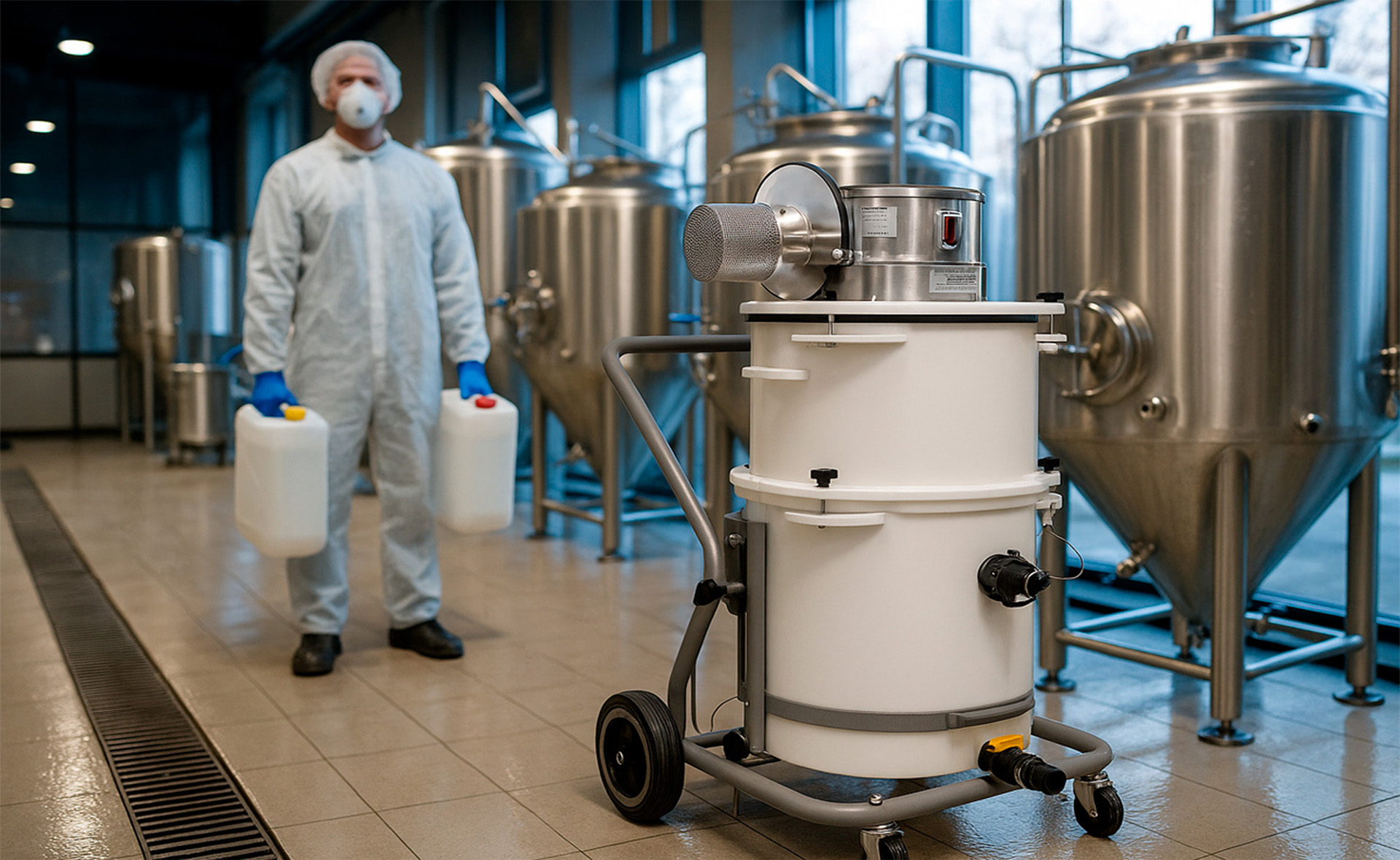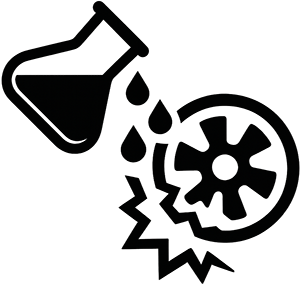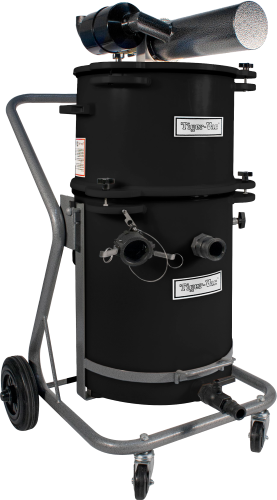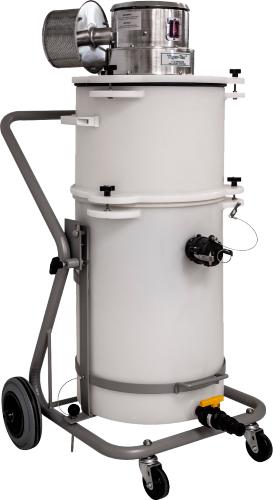We normally deliver within 1–2 weeks – faster for stock items. Contact us for a specific delivery time for your model.
Liquids in ATEX zones
It looks safe – but is it really?

Flammable liquid? Acid? Is your solution certified – or just guesswork?
In many workplaces, liquids are removed with cloths, mops, or standard wet vacuums – even in areas with explosion risk, highly corrosive acids, or aggressive bases. It might seem to work in the moment
But many of them:

Are not resistant to corrosive liquids

Do not retain vapours

Spreder brændbare stoffer
Do you really understand the risks?
Read our article on liquids in ATEX zones and the key pitfalls to avoid.
Don’t repeat the mistakes of others!
Accidents happen more often than many think. Here are two typical examples:
Explosion in warehouse due to incompatible chemicals
Source: MAHB Bulletin No. 16 – EU Joint Research Centre (2022)
An agrochemical warehouse exploded when peracetic acid accidentally came into contact with sodium chlorite. The accident occurred because a forklift may have moved both substances – or simply passed through the area between them. After the incident, chemicals were found that did not appear on the warehouse inventory list, and several turned out to be incompatible.
An explosive atmosphere occurred during the spraying of hot oil
Source: Hazards of High Flash Point Liquids in Relation to the ATEX 137 Directive, Chilworth Technology Ltd.
At a chemical plant, hot oil (300 °C, 4 bar) leaked from a 12 mm hole in a pipe. The spray hit an ATEX-approved light fitting and a sprinkler, which broke the glass of the fitting – and ignited an explosive atmosphere of hot vapours and oil droplets. The system was correctly designed, but the lack of insulation (lagging) proved to be the critical failure.
We have the solutions for you!Vi har løsningerne til dig !
Our solutions for liquids in ATEX zones

Your 3-in-1 solution
Tiger-Vac SS-ARU-15 EX (TC) MRAC
Liquid vacuum for hazardous liquids and vapours. One of the market’s only vacuum cleaners that is both ATEX-approved and designed for:
ATEX Zone 1/21 approved II 2GD
Aggressive chemicals
Vapour retention

Tiger-Vac CWR-ARU-15 (TC) POLY MRAC
Liquid vacuum for aggressive liquids and vapours in sterile environments:
Designed for cleanrooms up to ISO Class 4 (formerly known as Class 10 in the old US FED-STD 209E standard)
ATEX
Got a question? Contact us in a way that’s convenient for you.
The right equipment makes the difference when liquids need to be removed without creating new risks.
We are happy to help you find the solution that suits your environment and your requirements.
Call Thomas directly at 20228272
or send us a message
Contact us
E-mail: sales@particulair.com
Telefon: +45 7023 1203
NR.VAT: DK 34129894
We usually reply within one business day – excluding weekends and public holidays.
FAQ – Frequently Asked Questions
Because they are not designed for it. Many materials are degraded by acids and bases – and they lack both the tightness and filtration needed to handle vapours and aerosols. This can lead to leaks, corrosion and explosion hazards.
Yes – if the liquid releases vapours that are hazardous to health or pose an explosion risk. An activated carbon filter can retain dissolved organic compounds and minimise the spread of vapours into the air and equipment.
When an explosive atmosphere of vapours or aerosols may form – for example in case of spills, spraying, heat or poor ventilation. This applies both to organic solvents and certain acids.
ATEX still applies – if heating, spraying or movement in the process can create an ignitable atmosphere. It is the conditions, not just the flash point of the liquid, that determine the risk.
We will help you. Describe the liquid, the quantity, the environment and any requirements for cleanliness, ATEX and documentation – and we will match you with the right solution.
We will help you. Describe the liquid, the quantity, the environment and any requirements for cleanliness, ATEX and documentation – and we will match you with the right solution.
No – ATEX equipment must not be modified or tested without the manufacturer’s procedure. All documentation (ATEX, CE, filters, etc.) is included and can be used in your own risk assessment.
Yes – we have models for pharma, biotech, microelectronics and cleanrooms up to ISO Class 4. Documentation, filtration and material selection are optimised for these environments.
